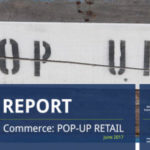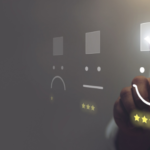With all the different stimuli, options, mediums, and content available today companies are searching for better ways to connect and engage with their audience and potential customers. By some estimates individuals are now exposed to over 5,000 advertisements in a single day. So how best to reach customers with rich, relevant experiences that cut through the clutter and engage with individuals on a more interpersonal level? The answer is digital personalization.
Personalization is the process of tailoring customer experiences for specific individuals. It has proven to be demonstratively effective with 90% of customers stating that individualized experiences have an impact on their buying decision and 80% of retailers reporting that personalization has increased their revenue. In one such instance, Avon reported a whopping 96% increase in conversion rate by personalizing a product category page.
Yet according to a recent Internet Retailer study of the top 100 retailers, only 39% of the retailers offered suggested products on their homepage based upon the shopper’s behavior interacting with the website and only 15.5% used the shopper’s preferences in search recommendations auto-populating options such as color, cut, size, or brand.
So why are so few retailers embracing digital personalization? Do they feel that it’s simply too complex and feel so overwhelmed that they don’t even know where to begin?
Where to Start With Digital Personalization
You already possess a ton of information about your customers even if you don’t realize it. Within your sales data lies customer’s previous purchase history which you can utilize when starting to build your personalization strategy. Customer’s previous purchases can give insight into their style, sizes, and preferences that you can then use to form more relevant experiences. If a customer previously bought a top, you should be suggesting the matching bottom. If a customer bought a granola bar with dark chocolate and cherries, you should be suggesting other bars with dark chocolate and fruit.
Another great starting point for your digital personalization strategy is simply adapting the customer experience based upon how the user got to your website and whether they are logged in. Were they referred from an organic search or a targeted ad? Are they a new customer or existing customer? You can start to personalize the experience based upon how they got to your website or how many times they visited your website. If the customer is logged-in, you can then pull from other data like wishlists, add-to-carts, previous order and browsing history, and any other information you might have about the customer.
While the long-term goal is to understand your customers to an extend that you can begin offering each individual customer their own unique experience, initially you can create customer segments for your personalization strategy. Based upon your website’s user personas, create a few groups to target different users and have personalized experience based upon their segment. Later you can mine the data or employ algorithms to look for patterns in customer behavior. Initially your segments might be as broad as males versus females, but as you evolve these segments might narrow to single mothers with two teenage daughters who live in the rural Georgia.
While these are just a few ideas for kicking off an initial personalization program, my next post will delve into more complex ways of segmenting data and creating even greater programs and content. At Sophelle, we can help you navigate the personalization landscape, develop a personalization roadmap, select the right personalization software and tools, and even oversee the implementation and manage the execution. Contact us today to learn more.
Contributed by Timm Henderlight




